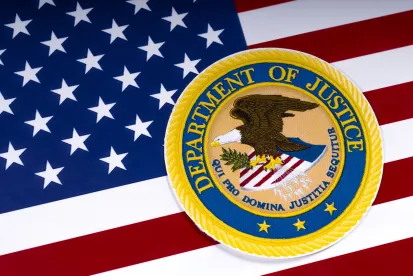Perhaps the signature initiative of the Department of Justice’s Civil Rights Division under the current Administration has been its Combatting Redlining Initiative. By “redlining,” the Department means that a lender has avoided providing access to home mortgage loans to homeowners and prospective homeowners in majority-minority census tracts, in violation of the Fair Housing and Equal Credit Opportunity Acts. The Department itself calls the initiative its “most aggressive and coordinated enforcement effort to use federal civil rights laws to eradicate redlining,” and it has grabbed headlines and made an impact, including, among other examples, the largest settlement for redlining in the Department’s history and the first resolution with a non-depository mortgage company.
In our view, as explained below, DOJ investigations of financial institutions for redlining will only increase over the foreseeable future. Financial institutions that encounter such an investigation or are contemplating it from a risk perspective should consider at least three things:
-
“Redlining,” as used by the DOJ in its current initiative, does not necessarily involve any intentional discrimination and, to the contrary, is more likely not intentional;
-
The fact that an institution’s primary regulator has never raised a concern about redlining should not give that institution comfort that an investigation or lawsuit is unlikely; and
-
Little is publicly available from authoritative sources about the specific details of DOJ’s approach to alleged redlining, so a proactive approach based in experience is usually best.
We explain each in turn below.
“Modern day redlining”
In light of the history and use of the term “redlining,” it would be understandable for the executives and directors of banks not to have redlining risk front of mind, particularly where those banks have worked to develop strong antiracist policies and cultures. The term “redlining” originated in reference to intentional, racist practices by the federal government regarding government-insured mortgages for homeowners during the New Deal. Specifically, the Home Owners Loan Corporation and the Federal Housing Administration color-coded maps of hundreds of cities to indicate their assessment of the risk of insuring mortgages in specific census tracts. Almost invariably, census tracts where a majority of residents were African American were circled in red, which meant that mortgages in those tracts were too risky to insure; private lenders would then refuse to lend where mortgages could not be federally insured. The Fair Housing Act of 1968 outlawed that practice. So “redlining” risk may not be front of mind for many today—no bank is circling neighborhoods in red or purposefully refusing to lend to census tracts based on the race of their residents.
But that is not what the Combatting Redlining Initiative is targeting today. Rather, the first key to understanding the Department’s initiative is to recognize that one may bring a lawsuit under the Fair Housing Act not only for intentional discrimination, but also under a “disparate impact” theory. See Texas Dep’t of Housing & Community Affairs v. Inclusive Communities Project, Inc., 576 U.S. 519 (2015). A disparate-impact claim alleges that a facially neutral policy—unmotivated by race or any other kind of discrimination—has a disproportionate adverse effect on minorities and is otherwise unjustified by a legitimate rationale. When the Department references “modern day redlining,” usually this is the reference.
The relevance—or not—of a primary regulator
Banks should also be aware that their anti-redlining supervision by the Office of the Comptroller of the Currency (OCC) or their state law chartering regulators is less relevant to DOJ investigations than ever before. At a certain level, it is always true that regulatory supervision should not lull financial institutions into a false sense of comfort regarding DOJ investigations. A clean bill of health from the OCC or the state regulator is no defense to DOJ investigations generally, and there have always been plenty of such investigations in contexts far broader than fair lending.
But the relevance of OCC or state regulator supervision to redlining investigations is less now than ever before because the DOJ has drastically reduced its reliance on referrals to start investigations. That is, in years past, the DOJ would often begin redlining investigations when it received a referral—most often from the OCC or HUD. Now, however, the DOJ is initiating investigations based on “big data.” Specifically, DOJ is taking the lending information collected pursuant to the Home Mortgage Disclosure Act and running that information through its analytics to identify lenders with statistically noticeable patterns in majority-minority census tracts as compared to peers. (Indeed, since the announcement of DOJ’s Combatting Redlining Initiative and the maturation of its use of data analytics to identify investigation targets, the Government Accountability Office has reviewed OCC’s oversight of banks’ fair lending practices and issued a critical report, calling for more strenuous and regular review.)
This is why DOJ’s redlining investigations will continue for the foreseeable future. It is reasonable to assume that the initiative has started with those institutions with the most significant statistical disparities in lending. But as each round of investigations concludes with a settlement, DOJ will likely move on to the next set of banks with statistically significant lending disparities in majority-minority census tracts—albeit slightly less significant disparities than the banks considered in the prior round. DOJ has been increasingly relying on analytics for target identification across a wide variety of contexts—from fair lending to tax to antitrust to drug trafficking—and investigation patterns follow similar arcs across sectors.
It is fair to observe, moreover, that there is a political component to the Combatting Redlining Initiative. This has been a signature initiative of the current Administration, and DOJ’s public-affairs plans for resolutions over the last 18 months reflect an effort to generate and capture public goodwill for the investigations as racial-justice work (which is likely why DOJ public affairs uses the word “redlining” and eschews reference to disparate impact). With a presidential election coming into view in the fall of 2024, there is zero political reason for DOJ to take its foot off the gas pedal.
Law through enforcement actions
Finally, there is an unfortunate dearth of publicly available guidance on DOJ’s process and practices for banks to consider in analyzing their own conduct. Nor is there any significant case law elaborating how disparate-impact fair-lending claims work in different factual contexts. Rather, this is an area of the law where DOJ principally sets forth its position by inference from public enforcement actions—and even then, much is beyond the realm of reasonable inference. Under these circumstances, financial institutions are wise to rely on counsel with experience in DOJ redlining investigations.
As in most contexts of stepped-up DOJ enforcement, the best approach is usually a proactive one. It is far better for an institution to undertake a critical review of its own policies and practices and remedy any identified shortcomings than it is to wait to receive a notice of investigation by the DOJ.





 />i
/>i

